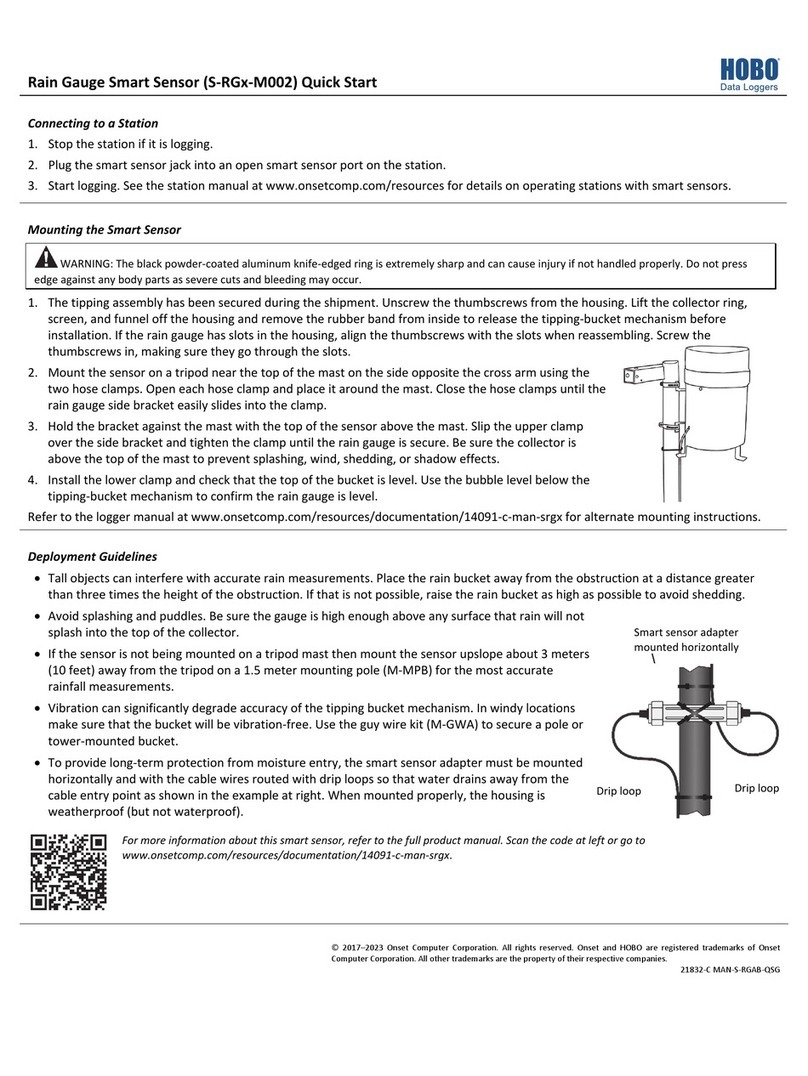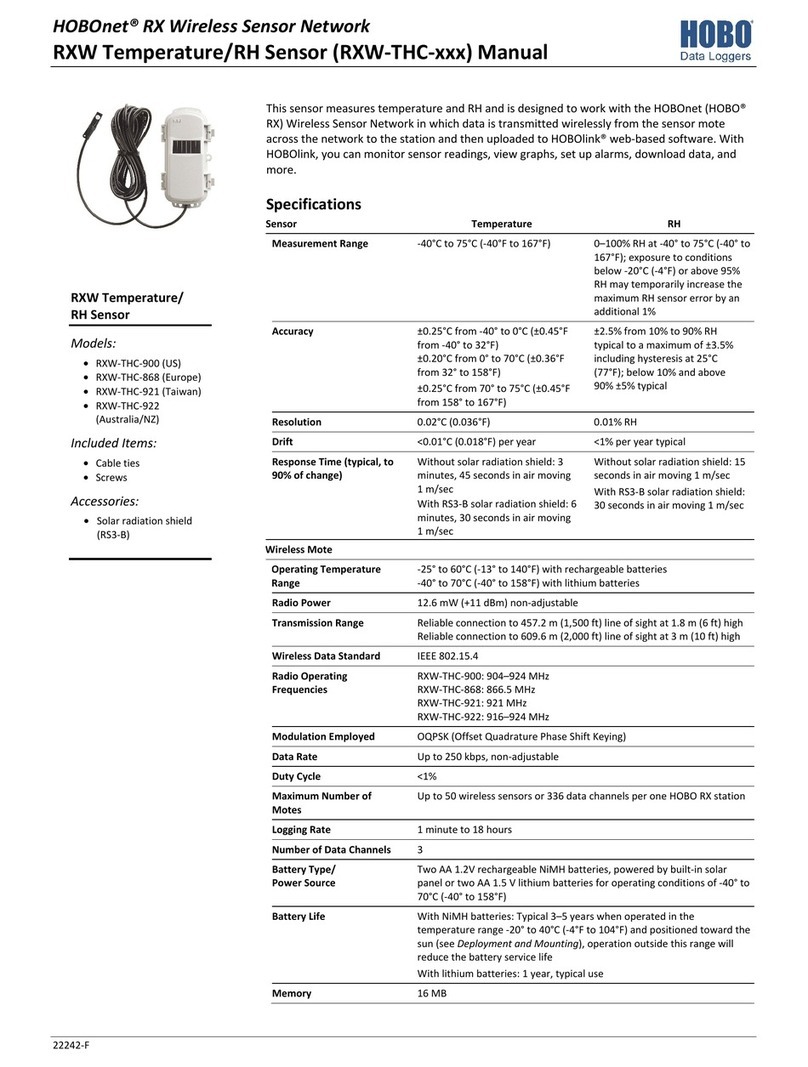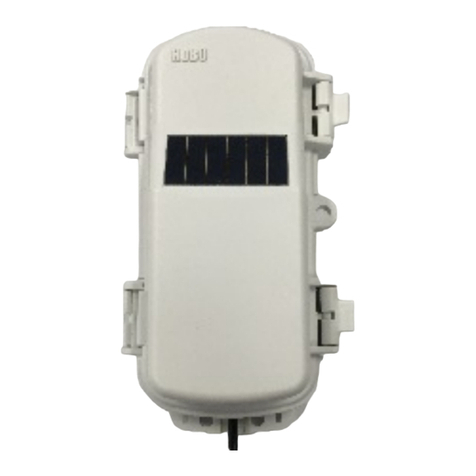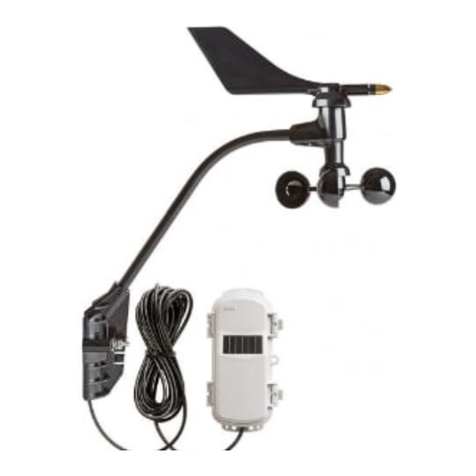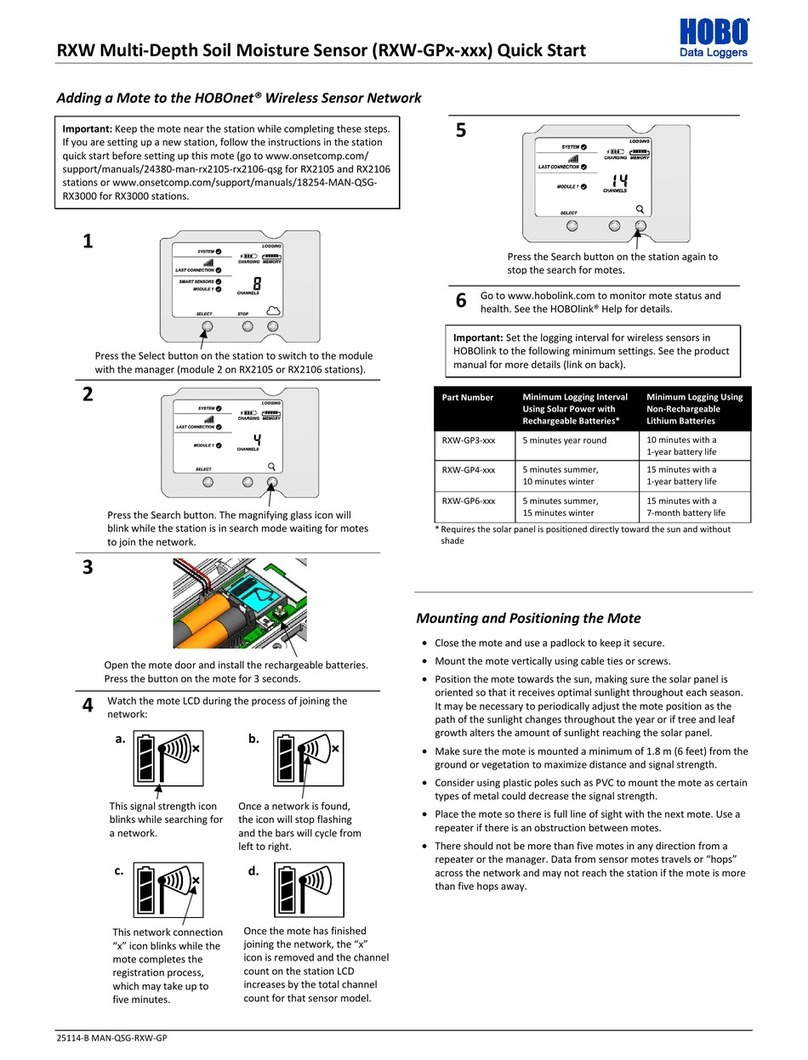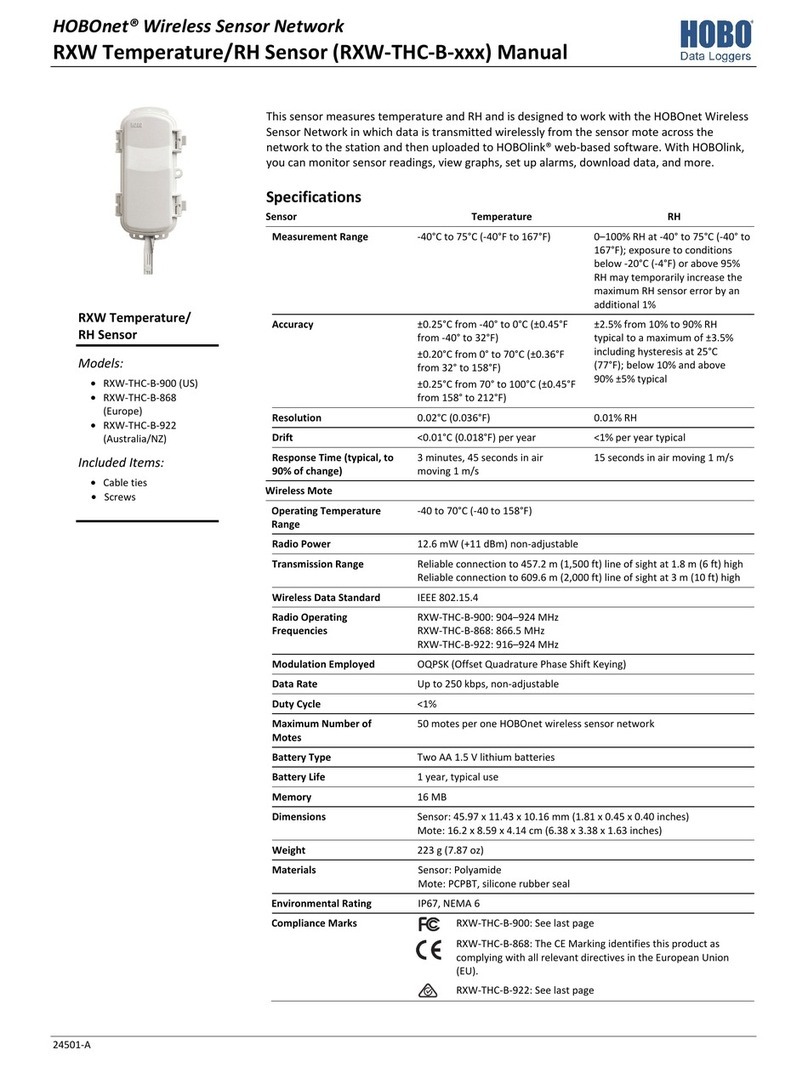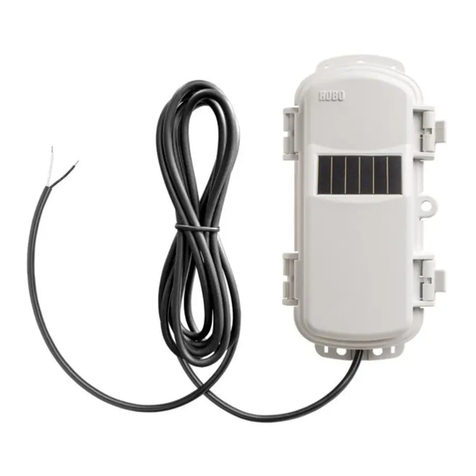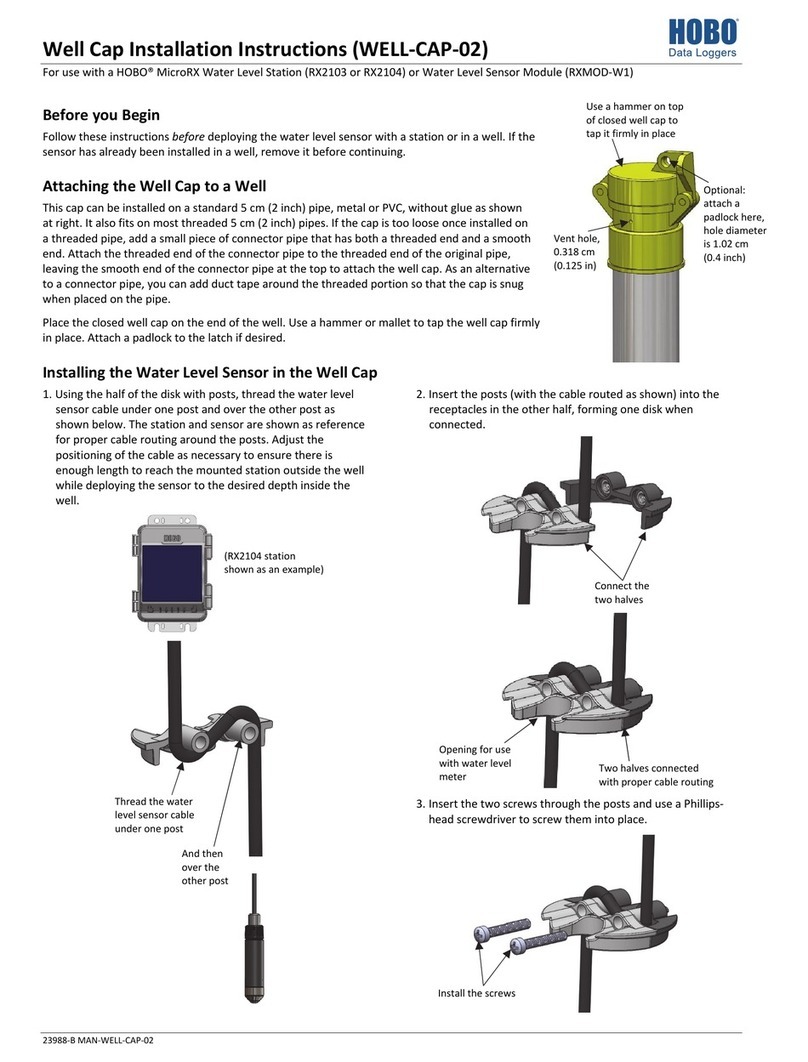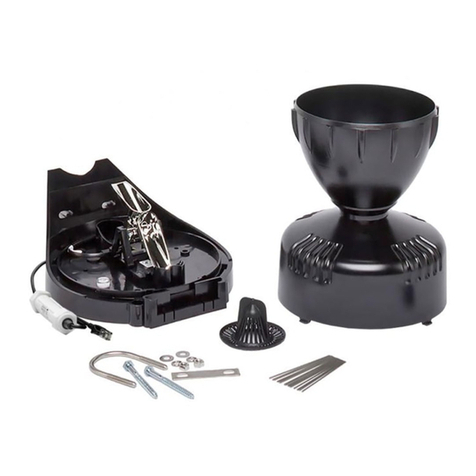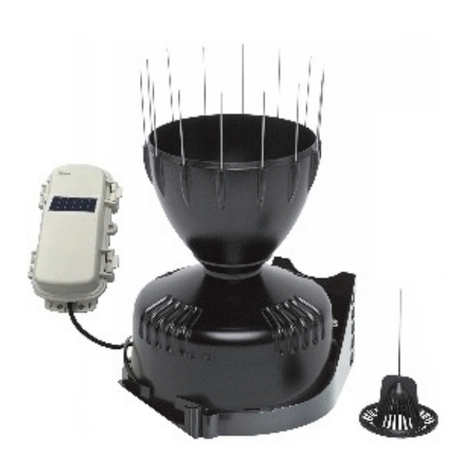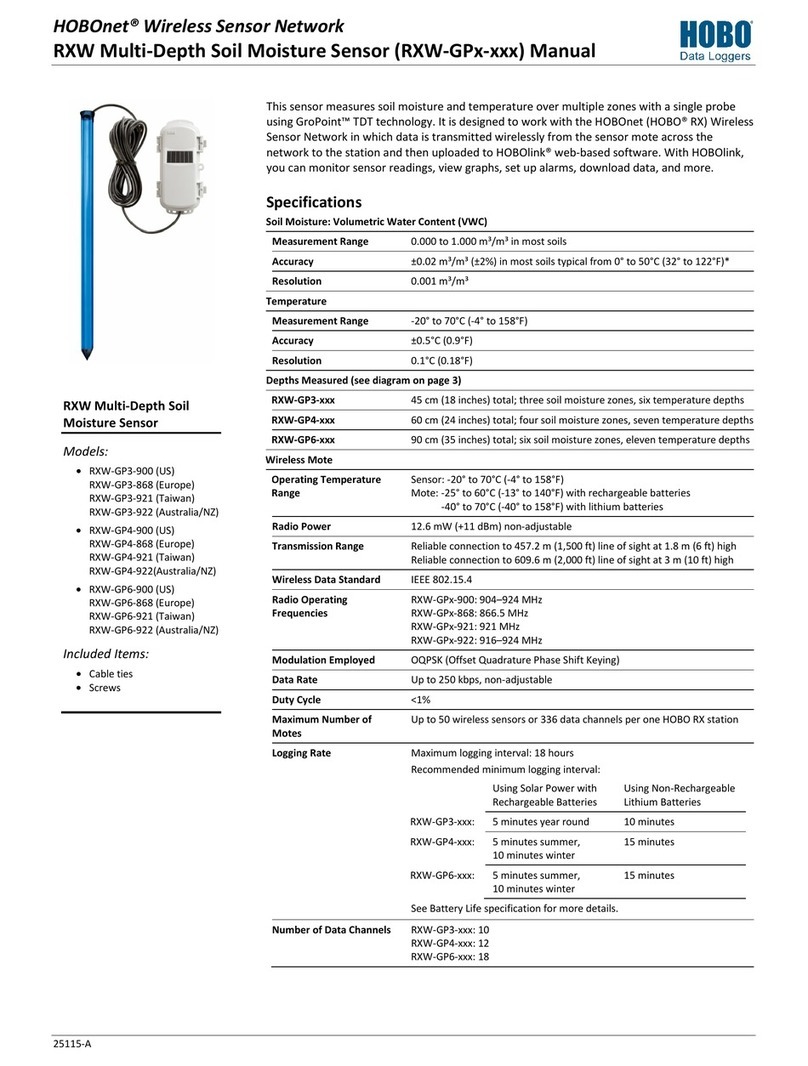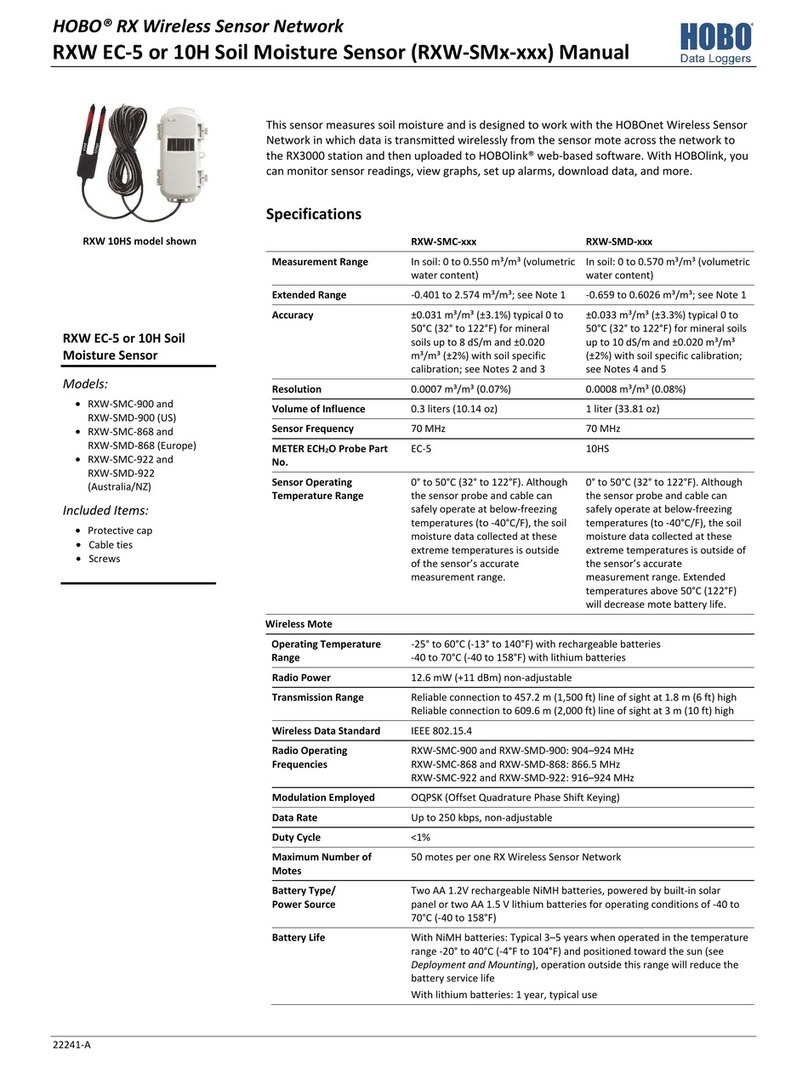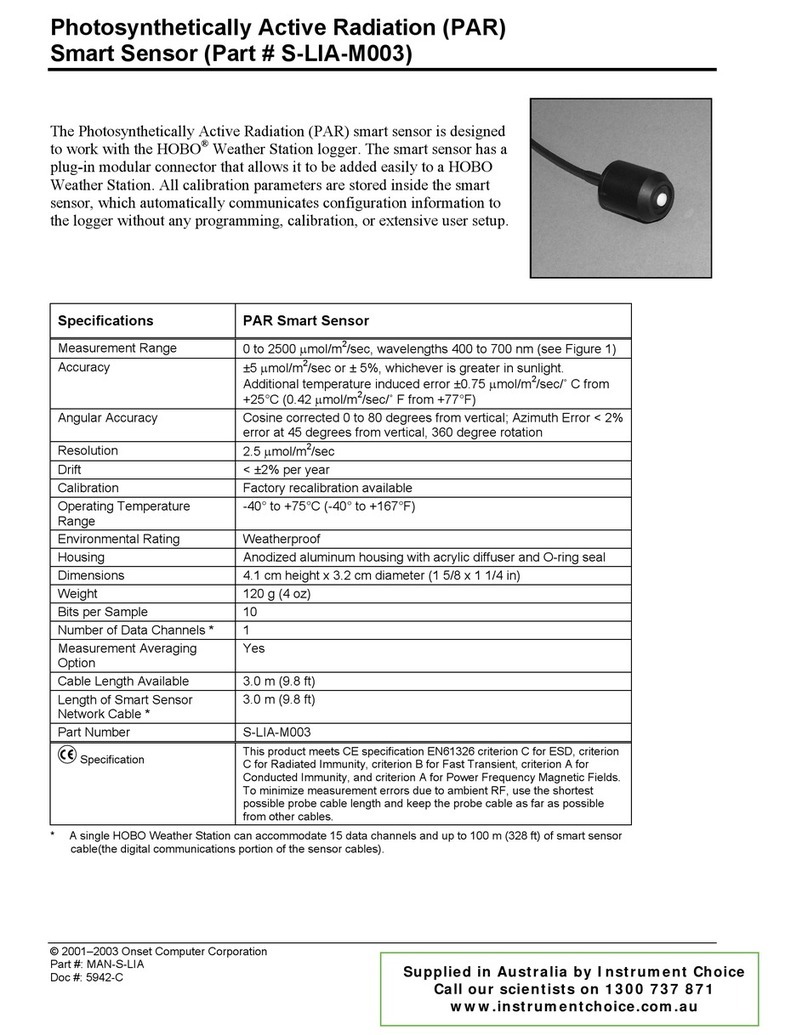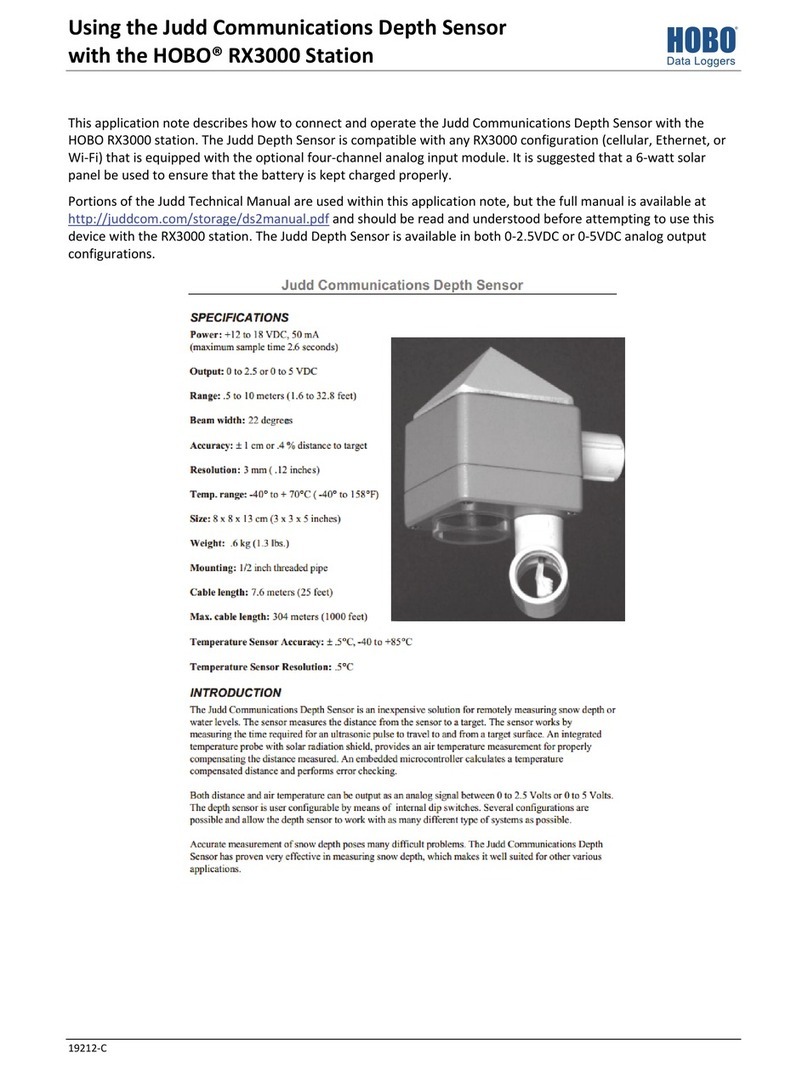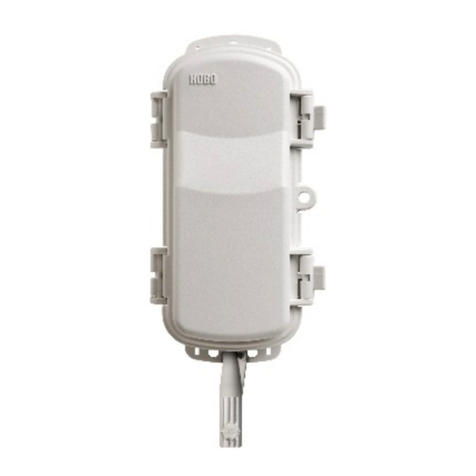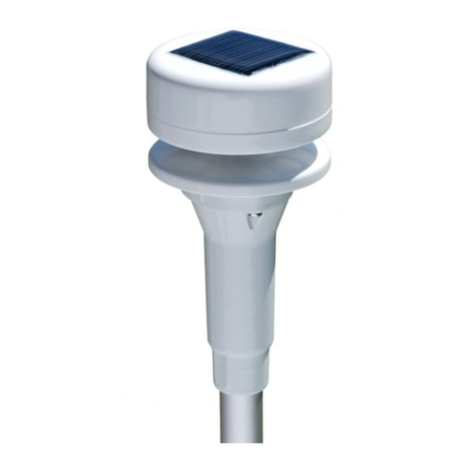
RXW TEROS-12 Soil Moisture EC Temp Sensor (RXW-T12-xxx) Manual
1-800-LOGGERS 6 www.onsetcomp.com
•Place the mote so there is full line of sight with the next
mote. If there is an obstruction between two sensor
motes or between the sensor mote and the manager, then
use a repeater mounted on the obstruction. For example,
if there is a hill between the sensor mote and the
manager, place a repeater at the top of the hill between
the sensor mote and the manager.
•There should not be more than five motes in any direction
at their maximum transmission range from the manager.
Data logged by a wireless sensor must travel or “hop”
across the wireless network from one mote to the next
until it ultimately reaches the manager connected to the
station. To make sure the data can successfully travel
across the network, the mote should not be more than
five hops away from the manager.
•The HOBOnet Wireless Sensor Network can support a
maximum of 50 motes.
•Use a #4-40 screw to attach a ground wire to the port on
the back of the mote if you are deploying the mote in a
location where lightning is a concern.
Maintenance
If the sensor needles become contaminated with oils from
contact with skin or another source, it is necessary to clean the
needles to ensure accurate EC readings in salty soils with bulk
EC greater than 10 dS/m.
1. Clean each needle using a mild detergent, such as liquid
dish soap and a nonabrasive sponge or cloth. Avoid
detergents that contain lotions or moisturizers.
2. Rinse the sensor and needles thoroughly with tap or
deionized (DI) water. Do not touch the needles with an
ungloved hand or bring them in contact with any source of
oil or other nonconducting residue.
The mote is designed for outdoor use, but should be inspected
periodically. When inspecting the mote, do the following:
•Verify the mote is free of visible damage or cracks.
•Make sure the mote is clean. Wipe off any dust or grime
with a damp cloth.
•Wipe off any water before opening the mote.
•Make sure the interior seal is intact and the latches are
fully locked when the mote door is closed.
Troubleshooting
If the sensor readings are too low or slightly negative, check for
air gaps around the sensor needles. These could be produced
below the surface of the substrate when the needle contacts a
large piece of material and pushes it out of the way, or if the
sensor is not inserted perfectly linearly.
If the sensor readings are too high, make sure the media was
not packed excessively or insufficiently during sensor
installation. Higher density can cause the sensor readings to be
elevated.
Updating Mote Firmware
If a new firmware version is available for the mote, use
HOBOlink to download the file to your computer.
5. In HOBOlink, go to Devices, then RX Devices, and click your
station name.
6. On the station page, click Overview and scroll down to
Device Information.
7. Click the Wireless tab. This icon appears next to the
mote if there is a new version of firmware available.
8. Click the firmware upgrade link. Click Download and
save the firmware .bin file to your computer.
9. Connect the mote to the computer with a USB cable (open
the mote door and use the USB port to the right of the
LCD). The blue LED is illuminated while connected.
10. The mote appears as a new storage device in the
computer’s file storage manager. Copy the downloaded
firmware file to the new storage device (the mote). The
blue LED will blink slowly while the file is copying.
11. After the file is copied to the mote, the LED will stop
blinking and remain a steady blue. Eject the storage device
from the computer and disconnect the cable from the
mote. The firmware installation process will begin
automatically on the mote. The blue LED will blink rapidly
while the firmware is installed. Once the firmware
installation is complete, the LCD symbols return and the
mote will automatically rejoin the network.
Notes:
•Mac® users: A message may appear indicating the disk
has not ejected properly when disconnecting the mote
from the computer. The mote is operational and you can
ignore the message.
•If the blue LED turns off abruptly while copying the file or
installing the firmware, a problem has occurred. Contact
Onset Technical Support for help.
Battery Information
The mote uses two 1.2 V rechargeable NiMH batteries, charged
by the built-in solar panel. The quality and quantity of solar
light can affect whether the battery is sufficiently charged to
last through the night and cloudy periods. Make sure the mote
is placed in a location that will receive several hours of sunlight
each day. If the mote does not receive enough sunlight to
recharge the batteries, the battery life is estimated at 3–4
months. When batteries are regularly recharged, expected
battery life is estimated at 3–5 years. Battery life varies based
on the ambient temperature where the mote is deployed, the
logging interval, the number of tripped alarms, and other
factors. Deployments in extremely cold or hot temperatures
can impact battery life. Estimates are not guaranteed due to
uncertainties in initial battery conditions and operating
environment.
Mote operation will stop when battery voltage drops to 1.8 V.
Mote operation will return if the battery recharges to 2.3 V. If
the batteries are unable to be recharged, replace them with
fresh rechargeable batteries. Note: if you install used
rechargeable batteries that together are less than 2.3 V, the
mote will not resume operation.
To replace rechargeable batteries:
1. Open the mote door.
2. Remove the old batteries and install fresh ones observing
polarity.
